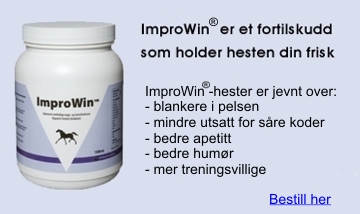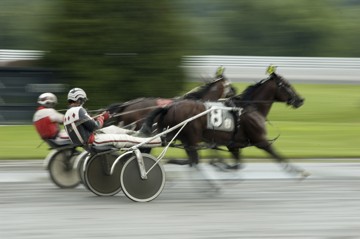Links to horse health, tramsport and a little about driving a horse
On this page we present some useful links about horse health, as well as other topics like horse racing and foring of horse. Vitality Innovation is not responsible for content on external pages.
horse Health
lameness
Veterinary Ingeborg Bech (who is also ImproWin dealer) has written an article about halthet at horse and investigation of it (opens in new window) Article about halthet – Click here
Laminitis
There is a lot about webpages on the web. Here is a detailed overview of feed-related bulkhead from Felleskjøpet. Click here
Worm treatment – Inbred parasites
Veterinary Ingeborg Bech (who is also ImproWin dealer) writes here about strategic snake treatment of horses. Click here
Silje Rosenberg writes about insane parasites here
Back and back pain in the here
Veterinary AK Milde at the clinic at Travparken has written several articles about horse on the clinic’s website. Here are some about the horse’s back. The clinic at the Traveller negotiates ImproWin.
- How much can the horse wear?
- Treatment of horses with pain in the back
- Back problems in horse treatment of horses with tender back
- Back problems in horse examination
- What’s wrong with the back?
- When the horse is in the back
colic
Colic is a symptom – which may be due to several reasons. In this article, veterinarian Jan Olav Berget gives a review of how the diagnosis can be made by a veterinarian and what to think about in colic Click here to read more about colic
Tooth and dental care in horses
Article by Silje Rosenberg, Veterinary.Click here to read more
Horses and hoof disorders in horses
Silje Rosenberg gives an overview. Click here for owls and hoof disorders
mildew
It has been observed that horses that get ImproWin are less prone to mold. Here you will find an article about mold in a horse. Click here to read more about mold
Horse Racing – links
www.travritt.no
https://www.rikstoto.no/
http://www.ovrevoll.no/
www.rytter.no
Feeding the horse
Horse lining can be done difficult and can be done easily. If you want to learn more about the subject, go to a course with www.forkonsulenten.no or get a degree. From nature the horse is adapted to the steppes. The stomach is adapted to the high-straw eating of all the time. Today’s horse team is far from this ideal. The feed quality will vary (high / silage / straw), as well as the need for extra energy in the form of power feed for racing and competition horses. The horse must also adapt to the people who prescribe it and the feeding routines that apply (few, concentrated meals). Later on, awareness of how important it is with good access to good fodder is to ensure a good digestion.
Some concepts it may be good to have a sense of:
Coarse for horses is a collective term for: grass, tall, silo, sour, silage and straw. Grass is available in summer, on the goats. High is dry grass (80-82% dry matter) and can be stored in winter. Good high should be dry and dust free and it should be well-balanced. Mold in high dust and provide mold odor.
Silo – surfor – ensilage – round ball is the name of the concert. The grass here is not dried (completely) but soured (fermented) and packed airtight. The airtight gasket can be made in a silo or in a plastic package. In this way, nutritional value and hygiene are well maintained. The water and nutrient content of the preserved liner will vary from manufacturer to manufacturer; with time of harvest and precipitation. Silo – surfor – silage – round ball with traces of soil and mildew (due to poor preservation, plastic holes etc.) must not be used
Straw is the straw of our cereal species (wheat, oats, rye, barley). Only straw of oats or barley should be used – wheat halm may be dangerous. Straw is little nutrition, but if it is treated with ammonia, the industry becomes more accessible.
Coarse feed is the horse’s most important, at least 50% of the energy should come from coarse fodder. This means at least 1kg high per 100kg horse. A horse of 500kg therefore needs 5-7.5kg high per day. If it is to be fed with surfer / silo / silage / round bale, it must be compensated that the water content in these is above high (the solid must be analyzed).
The energy quantities in the various coarse feed types are different. When comparing grass-high-silo, it is necessary to do per kilogram of dry matter not per kg. To compare energy in horse feed, the unit FEh (unity horse) is used. A FEh is equivalent to the amount of energy in 1kg building.
In 1kg of gray matter it is about 0.8 FEh
In 1kg of acidic dry matter it is about 0.7 FEh
In 1kg high-dry matter it is about 0.6 FEh
In 1kg of straw dry matter, it is about 0.28 FEh (0.35 if the straw is amonia-treated).
Feed units are easy to use when different feed types (coarse feed, power feed, etc.) are compared with the amount of energy.
Power sources can be defined as high energy content per kg (over 0.8 FEh) (without concern about water content / dry matter). Definitively, therefore, pure oats, barley, corn, beet pulp / cuttings, soybean and oil liqueur lice (= high energy lining), as well as ready-to-use pre-mixes (which are commonly referred to as powerforces).
Power premixtures are available with different combinations (for jump, foal, competition horse etc.). These usually contain vitamins and minerals to meet the horse’s needs. A good rule is to provide a maximum of 0.5kg of pre-mixing per 100g per day. If the horse is a competitive horse that needs more energy than it gets from the rough and this 0.5 kg power mix, this should be given in the form of cereals, oil and the like.
When comparing the grain strokes, it is worth noting that:
1kg oats correspond to about 1 kg of pre-mix (in energy)
1kg oats correspond to approximately 0.8 kg of barley
1kg oats correspond to about 0.95kg betfor
1kg oats correspond to about 0.3l of oil
Oats should be given whole; buildings should not be completely Corn should definitely be crushed, ground or heat treated.
Vitamins and minerals
Normally, the need for vitamins and minerals is covered by the use of recommended amounts of energy. If little or no power is used, there is a need for vitamins and minerals.


